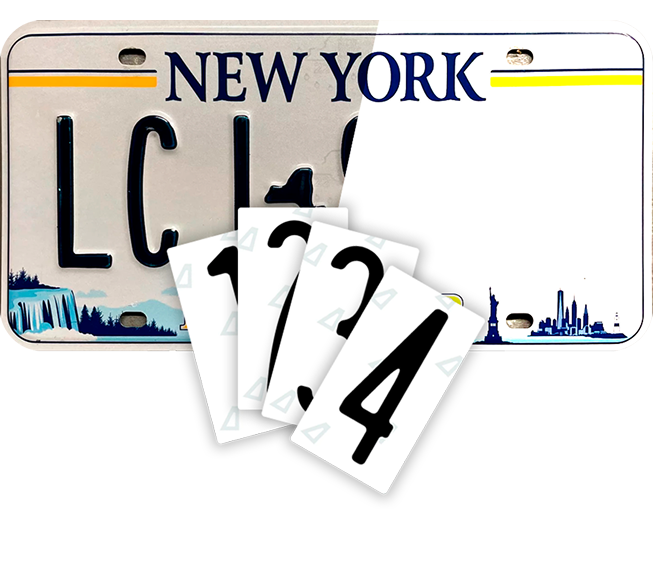Automated License Plate Recognition (ALPR) systems have become one of the most pervasive tools in modern law enforcement. Deployed on highways, patrol cars, parking lots, and toll roads, they silently capture plate numbers, timestamps, and GPS locations in real time - creating a digital trail of your vehicle’s movements.
But what exactly do these systems see? And more importantly, what can you do to reduce your exposure without breaking the law?
What ALPR Cameras Actually Capture
Contrary to popular belief, ALPR systems aren’t just snapping photos of your license plate. They're capturing high-resolution images and processing them with Optical Character Recognition (OCR) algorithms to extract:
- Plate numbers
- State or country of registration
- Vehicle location and timestamp
- Travel direction and speed in some cases
This data is often uploaded to centralized databases, where it can be used for everything from toll collection to surveillance, investigations, and even retroactive tracking. In some countries and U.S. states, these systems can retain data for years - even if you're not under investigation.
ALPR cameras are equipped with infrared sensors, allowing them to capture clear images in low-light or night conditions. The systems are designed to bypass glare, dirt, motion blur, and even license plate angles - making them extremely efficient at recording vehicle data under almost any condition.

Alite Blackout
Stealth in a сlick
test
Learn moreWhy Your Car Is Easy to Track
License plates are specifically designed for machine readability. Their fonts, reflectivity, and contrast were optimized not just for human visibility, but for camera recognition.
Even in the dark, ALPR cameras can capture plate data using infrared (IR) illumination. And rain, fog, or motion blur? Most modern systems compensate for all of it.
This means traditional plate placement - flat, exposed, and reflective - makes your vehicle an easy target for continuous monitoring.
What’s more, ALPR systems are increasingly linked to other databases: insurance records, traffic violations, toll history, and even geofencing triggers. That means your plate could be tied to automated decision-making systems you’re not even aware of.

Alite Nanotapes
Click and Stick
test
Learn moreHow a Number Plate Camera Blocker Sticker Works
To reduce visibility without breaking the law, many drivers now opt for non-mechanical, passive solutions. A number plate camera blocker sticker is one such tool. These adhesive overlays are designed to mimic the texture of a standard plate while subtly interfering with the way light reflects off its surface.
Rather than concealing a plate, the blocker sticker disrupts the plate’s infrared reflectivity - the light spectrum used by most ALPR cameras. This disruption leads to partial interference in Optical Character Recognition (OCR), especially under flash or nighttime imaging.
Some of these products are marketed as ghost plates, where special coatings or films scatter light or alter angles of reflection. These changes make it harder for ALPR cameras to produce a clean, scannable image - though the plate remains entirely visible to the human eye.
It’s not about evading detection - it’s about reducing unnecessary data capture. For drivers looking to avoid routine scanning while parked or inactive, a blocker sticker provides always-on, passive defense.

Nanofilm Ecoslick
Anti-radar stickers
test
Learn moreALPR Blocker Covers and Privacy Panels
If passive measures aren’t enough, license plate cover for cameras options offer active control. These include:
- Electrochromic covers that turn opaque at the push of a button
- Flip-down or retractable devices for privacy when stationary
- Reflective panels that bend IR light away from camera angles
These are best used in driveways, garages, or private lots. Importantly, they do not alter or damage the plate - they simply reduce visibility to scanners.
An ALPR blocker like Alite’s Blackout system is a good example. It allows instant plate privacy while the vehicle is parked, without violating road regulations.
Some systems are even motion-triggered or remote-activated, making them useful in secure zones where data capture may be unwanted or unnecessary. However, proper usage is crucial: using these while in traffic can violate laws, but while parked, they become a legitimate privacy tool.

Nanofilm Ecoslick Material
Anti-radar material
test
Learn moreGhost Plates and Context-Driven Exposure Control
The term "ghost plates" refers to any plate treated with materials or films that disrupt ALPR scanning without affecting legal readability. This includes specialized coatings, diffusers, and anti-reflective layers.
Most drivers aren’t looking to evade the law - they want to limit how often their location is recorded. When used in the right context, tools like ghost plates or a number plate camera blocker sticker can help you protect your privacy without interfering with public safety.
This isn’t about deception. It’s about context. Whether you’re parked near a building with constant CCTV or simply wish to opt out of passive tracking while inactive, it’s now possible to control what scanners can see.
Privacy is no longer just about personal data on your phone - it extends to your vehicle. Choosing the right license plate cover for cameras or nanofilm can give you the edge you need to drive with confidence, not exposure.

Folding frame Alite Flipper
Stealth in a click
test
Learn moreCheck Out: Is Covering Your Plate a Crime? A Look at What’s Legal in 2025




















